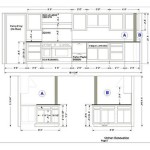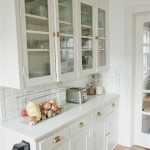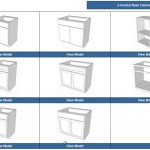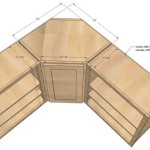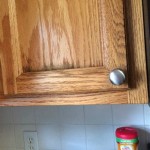How to Trim Around Kitchen Cabinets
Trimming around kitchen cabinets is an effective way to enhance their appearance and create a polished, professional finish. It involves adding decorative or functional molding to the perimeter of the cabinets, covering any gaps or imperfections and seamlessly integrating them into the surrounding walls. This article will explore various techniques and considerations for trimming around kitchen cabinets, guiding you through the process with practical steps and insights.
Choosing the Right Trim
The first step is to select the appropriate trim for your kitchen cabinets. Consider the style of your cabinets, the overall aesthetic of the kitchen, and the desired effect you want to achieve. Here are some popular trim options:
- Casing: This is a classic trim style that creates a frame around the cabinets, typically with a flat profile. It provides a clean and elegant finish, complementing traditional and contemporary kitchen designs.
- Crown Molding: This decorative trim is often used to add visual interest and height to a space. It's typically installed along the top of the cabinets, creating a smooth transition to the ceiling.
- Chair Rail: This horizontal molding is traditionally positioned about 36 inches above the floor. It can be used to protect the walls from scuffs and chairs but also serves an aesthetic purpose, adding definition and visual appeal.
- Baseboard: This trim runs along the bottom of the walls, covering the gap between the cabinets and the floor. It creates a cohesive look and adds a finishing touch to the room.
Once you've chosen the trim style, consider the material. Wood is a popular choice for its natural beauty and durability. However, alternatives like MDF (medium-density fiberboard) or PVC (polyvinyl chloride) are available, offering cost-effectiveness and moisture resistance.
Prepping for Installation
Before you begin installing the trim, it's essential to prepare the surrounding area. This involves ensuring that the walls are clean, smooth, and free of any debris.
Here are some steps for prepping the area around your cabinets:
- Clean the surfaces: Use a damp cloth and mild detergent to remove any dirt, dust, or grime from the walls and cabinets.
- Repair any imperfections: Fill any gaps or cracks with caulk or wood filler. Let it dry completely before moving on to the next step.
- Remove hardware: Take off any cabinet doors or drawers to ensure that you have access to the areas where you'll be installing the trim.
- Measure and mark the areas: Use a tape measure and pencil to mark the precise locations where the trim will be installed. Ensure that the lines are straight and accurate.
Installing the Trim
Once the preparation is complete, you can proceed with trim installation. The following steps provide a general guide for installing trim around kitchen cabinets:
- Cut the trim to size: Use a miter saw or handsaw to cut the trim pieces to the required lengths. Ensure accurate measurements to achieve a seamless fit.
- Attach the trim: Use wood glue, construction adhesive, or finish nails to secure the trim to the walls and cabinets. For nailing, use a nail gun or hammer and appropriate size nails.
- Miter the corners: For a professional look, miter the ends of the trim pieces at 45-degree angles to form clean corners. Use a miter saw or miter box to cut the angles accurately.
- Apply caulk: After installing the trim, run a bead of caulk along the edges to fill any gaps and create a smooth, watertight seal.
- Finish the trim: Once the caulk has dried, you can paint or stain the trim to match the existing cabinet finish or create a contrasting accent.
While these steps provide a basic outline, specific installation techniques may vary depending on the type of trim, material, and desired finish.

Adding Moldings To Your Kitchen Cabinets Remodelando La Casa

7 Types Of Cabinet Moldings And How To Use Them Properly

How To Add Trim And Paint Your Laminate Cabinets

Adding Molding To Cabinets Make Them Look Built In Young House Love

Diy Kitchen Cabinet Upgrade With Paint And Crown Molding

Moldings Finish And Trim With Gary Striegler Part 14

How To Get A Custom Cabinet Look Using Trim Sincerely Marie Designs

Adding Crown Molding To Cabinets Young House Love

Adding Moldings To Your Kitchen Cabinets Remodelando La Casa

Diy Cabinet End Panels With Shaker Style Trim Average But Inspired
Related Posts

